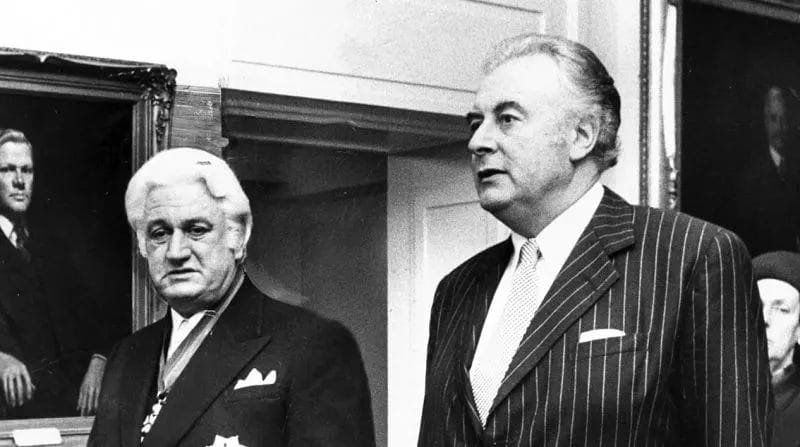

Australian firms are in a sweet spot between the bickering United States and China, where they can sell more and buy more cheaply because of weaker competition in both markets. Essentially, the mutual tariffs are a double blessing for Australia.
The latest escalation of the ongoing tariff war promises to impact on international trade exchanges to the tune of A$130 billion per year across a broad range of economic sectors, including metals, drugs, motor vehicles, electronic components, industrial machinery and foods.
Australia is one of the best-placed countries in the world to reap the gains of the likely trade diversions. For example, Australian beef producers will be much more competitive in exporting to China, as their American competitors have to grapple with the 25 per cent tariff on their beef. On the other side, as China raises tariffs on soybeans, Australia could buy this product more cheaply from US farmers keen to find new distribution channels.
And the same goes for all other products appearing in the US and Chinese hit lists on both the export and import sides of markets.
Read more: Six signs China wants to avoid a trade war
Australia’s main competitors for this double market grab are just a handful of highly developed economies with sizeable commercial ties with both the US and China. These include Canada, the EU, Japan and South Korea.
But in comparison with these trading competitors, Australia has a natural advantage due to the ease of access to maritime routes right across the Asia Pacific region.
While Europe is also in between the American and Asian continents, its overland trading routes are far less developed than the maritime ones, and are also clogged by hostile countries such as Russia, Turkey, Iran, Pakistan and India.
Canada is also at a disadvantage to Australia because of its more embedded economy and supply chains with the US. The challenging renegotiation of the North America Free Trade Agreement with the US and Mexico could also stunt Canada’s range of trading action.
Similarly across the Pacific, Japan and South Korea share Canada’s tricky position as they are too close to their powerful neighbour, in this case China. Not to mention that South Korea is also under intense geopolitical pressure from President Trump to renegotiate its advantageous bilateral free trade agreement with the US.
Australia is sitting pretty
Australia doesn’t pose a direct strategic threat to either China or the US, as its economy and military power is not too big. And it’s not so small that it can be easily trumped. Also, its location is not too close, yet not too far from any of the major contenders for primacy in the Asia Pacific region.
Australia has skin in the game, but not to an indispensable degree. More important still, Australia has solid and mutually beneficial bilateral free trade agreements with both China and the US, which gives more predictability to the country’s trade and investment flows.
In fact, as Australian trade ministerSteve Ciobo remarked, Australia is relatively safe from any retaliatory action from the Trump administration, thanks to a negative trade balance with the US.
On top of that, in terms of foreign direct investment, Australia has ample room and need to diversify its over-reliance on US money. Official data shows the US tops the list of foreign investment in Australia with 27 percent of total value by country, which is a level 10 times bigger than Chinese investments. On the other hand, Australian capital mostly flows out to the US (28 per cent of total value) and not very much to China (only 4 per cent).
Read more: Why Trump's tariffs will have little impact on Australia and a trade war is unlikely
It’s handy for Australia that the US trade representative has flagged new restrictions on Chinese investment in the US to contain “China’s stated intention of seizing economic leadership in advanced technology as set forth in its industrial plans, such as Made in China 2025”. This means more investment spillovers are likely to flow between China and Australia with more favourable terms than ever.
Deeper investment ties with China will make an increasing negative trade balance with Australia more acceptable to China over the long term. Also, this dynamic places Australia’s economy in pole position to take advantage of the improving quality of Chinese financial markets. This is evident in the ongoing rebalance of the Chinese economy, as it moves towards more reliance on growing consumer demand and away from inefficient, debt-fuelled investment.
What in ordinary times used to be Australia’s vulnerabilities may instead prove its strategic strength in the context of a trade tug-of-war between the US and China.
Overall, we're in the presence of a paradox. What in ordinary times used to be Australia’s vulnerabilities may instead prove its strategic strength in the context of a trade tug-of-war between the US and China.
As long as the trade war doesn't escalate to a full-blown military conflict, on the face of it Australia can still afford to sit on the commercial fence. With this pragmatic economic approach, cynics may well define Australia as a vulture country.
But to be realistic, the US-China trade war gives Australia the unprecedented chance to expand its economic footprint in the geopolitical agendas of both global superpowers. At such uncertain times, even more than pure economic profit, this strategic improvement will be the sweetest fruit for the lucky country.

This article originally appeared on The Conversation.
Giovanni Di Lieto does not work for, consult, own shares in or receive funding from any company or organisation that would benefit from this article, and has disclosed no relevant affiliations beyond their academic appointment.





